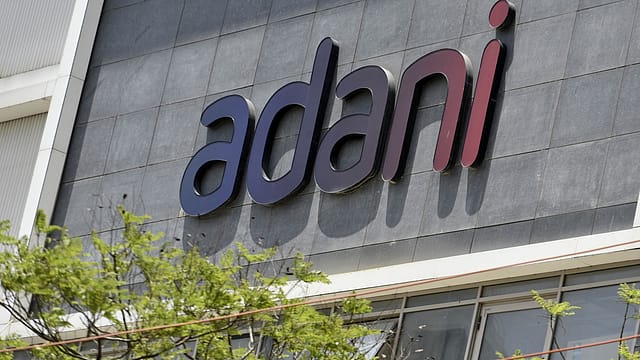Adani group plans to invest ₹60,000 cr in airport biz in 10 years
ADVERTISEMENT

The Adani Group has proposed to infuse ₹60,000 crore into its airports over the next decade, as part of its plan to transform the aviation hubs into bustling commercial centres that captivate city dwellers. With a current portfolio of seven operational airports and one under construction in Navi Mumbai, boasting a combined annual passenger handling capacity of 100-110 million, the group aims to amplify their capacity 2.5-3 times by the year 2040.
In the immediate future, ₹30,000 crore is earmarked for the augmentation of airport terminals and airside facilities across the group's airports within the next five years. This hefty investment comes in addition to the ₹18,000 crore already poured into the initial phase of the Navi Mumbai airport.
Arun Bansal, CEO of Adani Airport Holdings Limited on Sunday after the inauguration of a newly integrated terminal at Lucknow says, “We are building a new terminal in Guwahati. We have a plan to build a new terminal in Ahmedabad. Early next year, the Navi Mumbai airport will start and will have a capacity of 20 million passengers per year.”
January 2026
Netflix, which has been in India for a decade, has successfully struck a balance between high-class premium content and pricing that attracts a range of customers. Find out how the U.S. streaming giant evolved in India, plus an exclusive interview with CEO Ted Sarandos. Also read about the Best Investments for 2026, and how rising growth and easing inflation will come in handy for finance minister Nirmala Sitharaman as she prepares Budget 2026.
Karan Adani, Managing Director of Adani Ports and SEZ Limited, anticipates a paradigm shift for group-operated airports in Ahmedabad and Lucknow, envisioning them as future aviation hubs directly linked to Europe and the US. Presently, residents of these cities traverse West Asia, Delhi, or Mumbai en route to Europe or the US.
“What we will see is that these airports will be connected directly to the destinations overseas,” Adani said.
Adding to the vision, an additional ₹30,000 crore is allocated for city-side developments at eight airports over the next decade, encompassing the construction of hotels, multiplexes, and various other facilities. The group anticipates substantial revenue growth from these commercial ventures, recognising the regulated nature of aeronautical tariffs and projecting commercial investments to materialise over the course of a decade, contingent upon approvals.
Bansal further adds that these investments will be internally funded by the group, sidestepping queries regarding a reported $2.6 billion fund raise for the airport and green hydrogen business. The immediate focus remains on operationalising the Navi Mumbai airport and initiating city-side developments, with the possibility of an IPO for the business on the horizon.
“Internationally, our strategy is to participate in (airport development) opportunities where it makes sense for the group...where there is a larger opportunity in the country to participate in ports, transmission etc. We are looking at one specific country at the moment,” Bansal states.
In another announcement, Prime Minister Narendra Modi on Sunday inaugurated the integrated terminal 3 (T3) of the Chaudhary Charan Singh International Airport (CCSIA), which was built at a cost of ₹2,400 crore by Adani group.
T3 will cater to domestic and international flights, with capacity to handle 4,000 passengers during peak hours. Phase I of the world-class terminal can cater to 8 million passengers per annum and Phase 2 will enhance the handling capacity to 13 million passengers per annum.
Speaking on the development, Karan Adani said, "Our vision for CCSIA is big and far-reaching. The master plan aims to expand the airport's capacity to ultimately serve 38 million passengers annually by 2047-48. This exponential growth is a cornerstone of our strategy to support Uttar Pradesh's aspiration to become a one-trillion-dollar economy. We are not just building infrastructure – we are creating over 13,000 direct and indirect job opportunities, thus contributing significantly to the economic advancement of the region and the state.”
